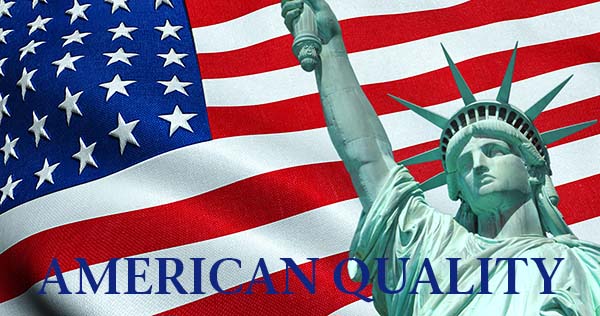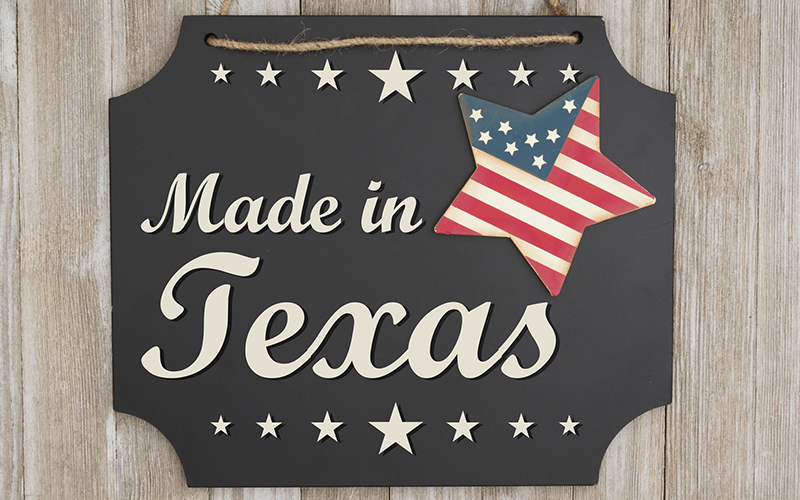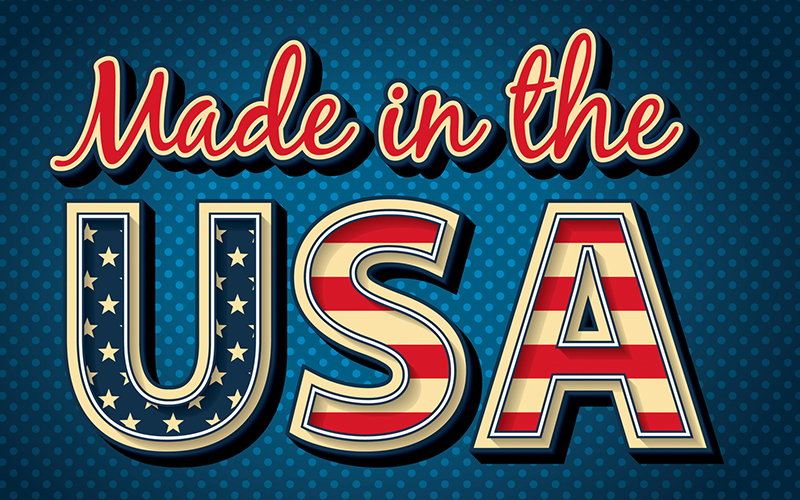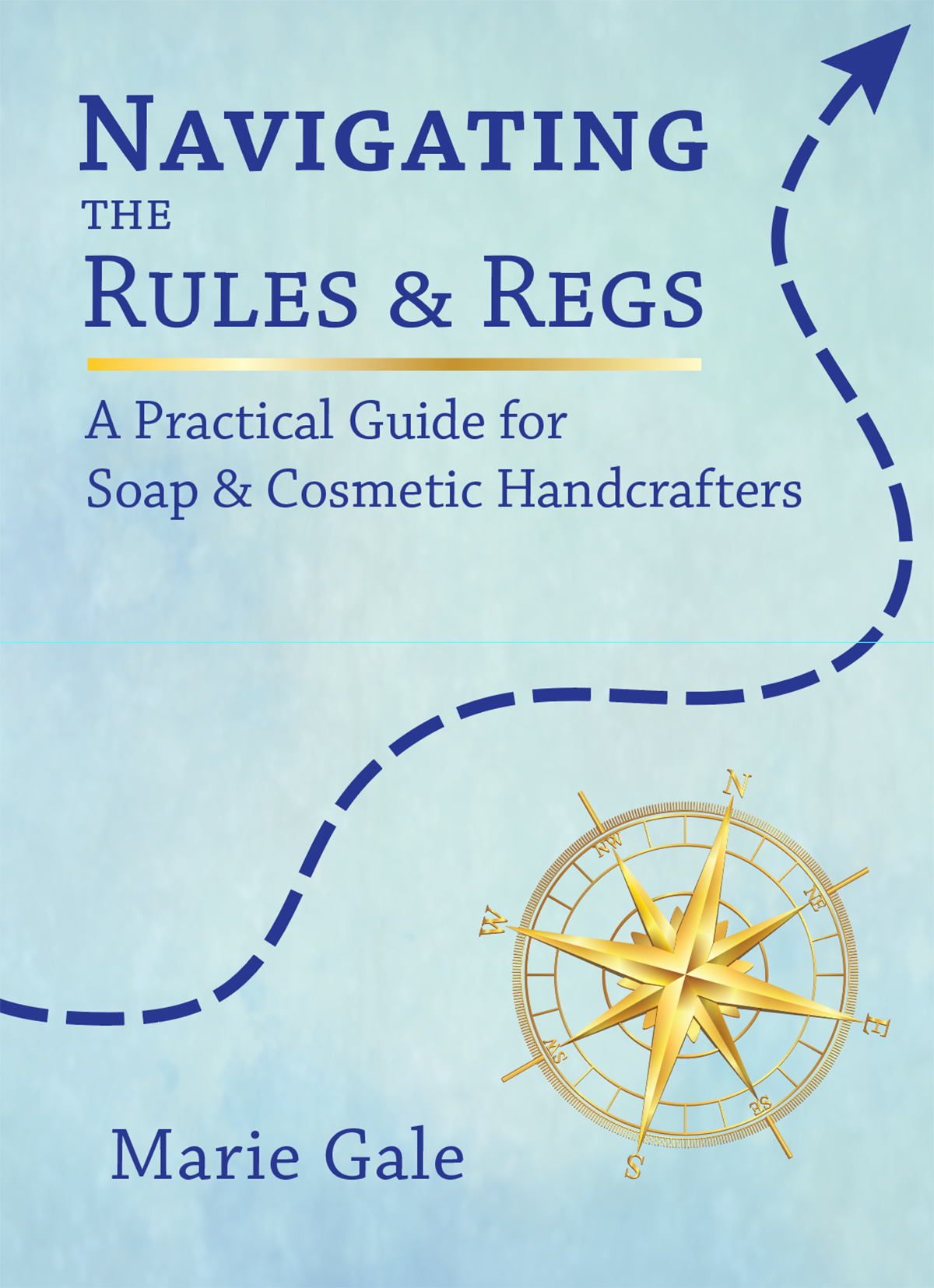[Updated Feb 14, 2022 and Feb 20, 2023]
If you want to make the claim that a product is “Made in the USA” you must comply with the Federal Trade Commission’s “Made in the USA” policy.
The FTC enforcement is based on its general authority to act against deceptive acts and practices and applies to claims made on product labels as well as statements made in labeling, advertising, promotional material, email, and website content.
There are no requirements that products must state that they are made in the US, except for textiles, wool products, and automobiles.1
Making the “Made in USA” Claim
The “Made in the USA” claim can come in many forms.
You could make an explicit statement, such as “Made in the USA” or “Our Products are American Made.”
You could imply that the product is made in the US with images, such as flags, US symbols (e.g., Statue of Liberty), maps or geographic references.

In 2023, the FTC also clarified that a claim that a product was made in a state of the USA is also a claim that the product was made in the USA (since, of course, the state is located in the USA).2

Either way, the claim could be made in any material describing one or more products. Note, however, that just putting a business address on the label (as required by the labeling regulations) is not considered a “Made in the USA” claim.
Meeting the Full Standard
The “Made in the USA” standard requires that the product is “all or virutally all” made in the US. That means, in particular, that:
- All the significant parts are of US orgin; AND
- The final processing or assembly is done in the United States.
Significant parts includes all the ingredients that go into a cosmetic or soap. Products made from imported raw ingredients or component ingredients manufactured outside the US do not qualify for the “Made in the USA” claim.
If you intend to use the “Made in the USA” claim, then be sure to check with all your suppliers to find out the actual source of the ingredients (especially oils and essential oils) and all the packaging materials including containers and closures you use. The determining factor is where the ingredient or material was manufactured — not the location of the supplier you purchased it from.
[Updated Feb 14, 2022] I recently found an FTC decision in which they specifically stated that since the packaging material has “no independent value” to the consumer and is typically discarded, an unqualified “Made in the USA” statement would likely NOT be deceptive,3 This confirms the FTC’s earlier (and unpublished, unclarified stance) from 1969.4
There is one small exception. If you are using a raw material which is not found or grown in the United States, it’s understood that the “all or virtually all” requirement doesn’t apply to material that is not available here. However, even when the raw material isn’t found or grown in the US, if the ingredient is a major component or essential to the product, it wouldn’t meet the full “Made in the USA” standard.
Example: Lotion made from US sourced ingredients and containing patchouli oil. Since patchouli does not grow in the US, the full “Made in the USA” claim would likely be allowed.
Example: Lotion made from US sourced ingredients, but containing lavender essential oil from France, would not qualify for full “Made in the USA” claim because the lavender oil COULD be sourced in the US.
Example: Soap made with palm or coconut oil would not qualify for a full “Made in the USA” claim even though palm and coconut oils are not grown or produced in the US, because they are primary and important components of the soap.
Qualified Statement
Where the product doesn’t meet the full qualification, it is still possible to make a qualified statement to let the consumer know what IS made in the USA.
Example: For soap made with palm and coconut oils, but manfuactured in the US — Made in the USA with imported palm and coconut oils.
Example: For a lotion made of both US and foreign ingredients — Made in the US using US and imported ingredients.
Example: For a bath fizzie that uses all US sourced ingredients except 18% epsom salts sourced from outside the US — Made in the US / 82% US sourced ingredients.
Substantiation
If you make a “Made in the USA” claim–whether the full claim or a qualified claim–you must have substantiation to back up your statement.
Don’t just assume that because an ingredient was purchased from a US supplier or can be manufactured in the US that it actually is US sourced. Check with your supplier(s) for all of your ingredients, and keep track of the source of each one you use. Make sure your records are kept in such a way that you can produce them for the FTC if necessary.
Suggestion: On your batch record for each batch you make, note down the source of each ingredient. That way you can tell at a glance whether the “Made in the USA” claim could be made and you have a permanent record.
Why is it Important?
To some consumers, whether or not a product is made in the USA is an important factor in their decision to purchase a product. To those people, clearly stating whether or not your product is “Made in the USA” is an excellent marketing tool.
For some manufaturers, pride in producing an American-made product drives putting the “Made in the USA” claim on their products.
Knowing what you can (and can’t) say about your product—and then applying that information to your labels and marketing materials—will accurately inform your customers AND help avoid potential violations down the road.
See the full “Made in the USA” standard (on the FTC website).



Leave a Reply